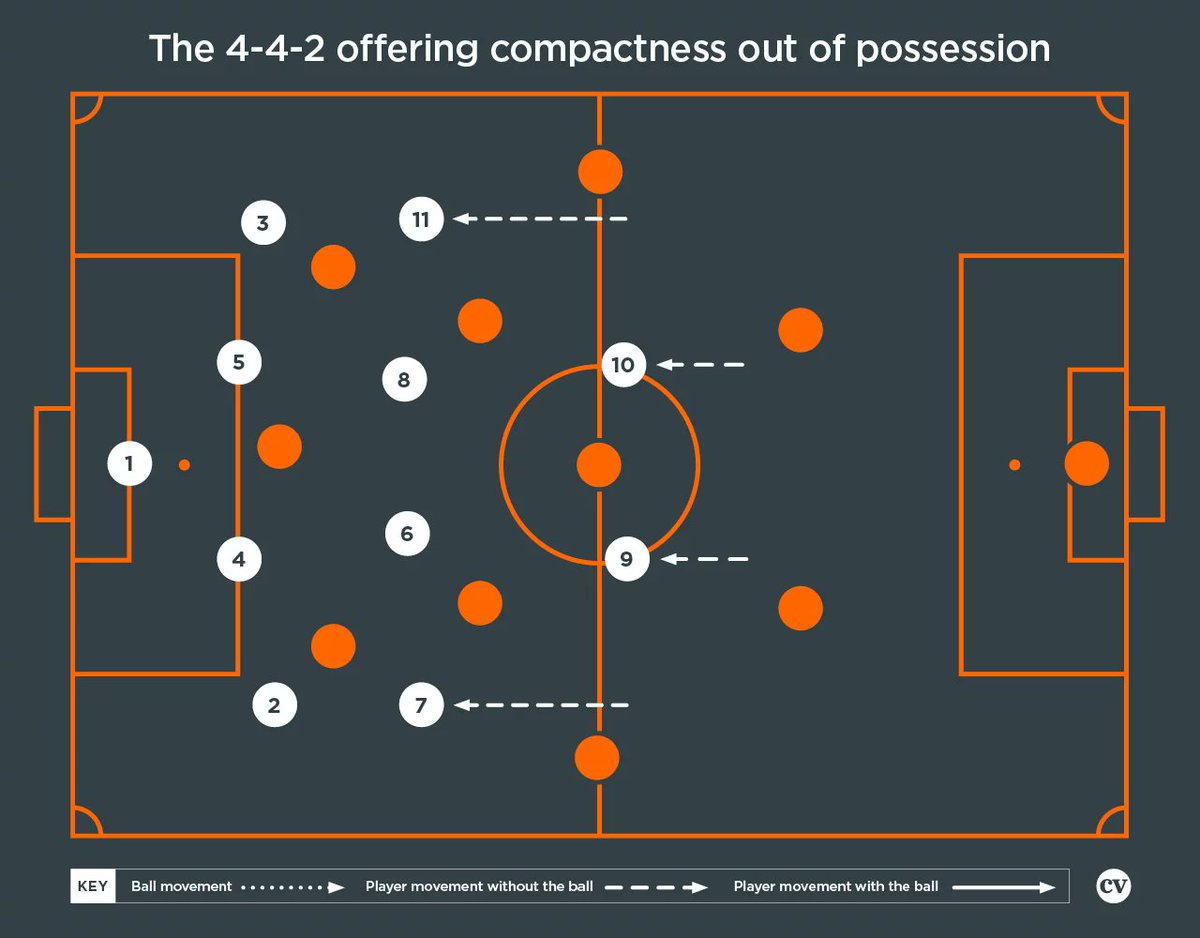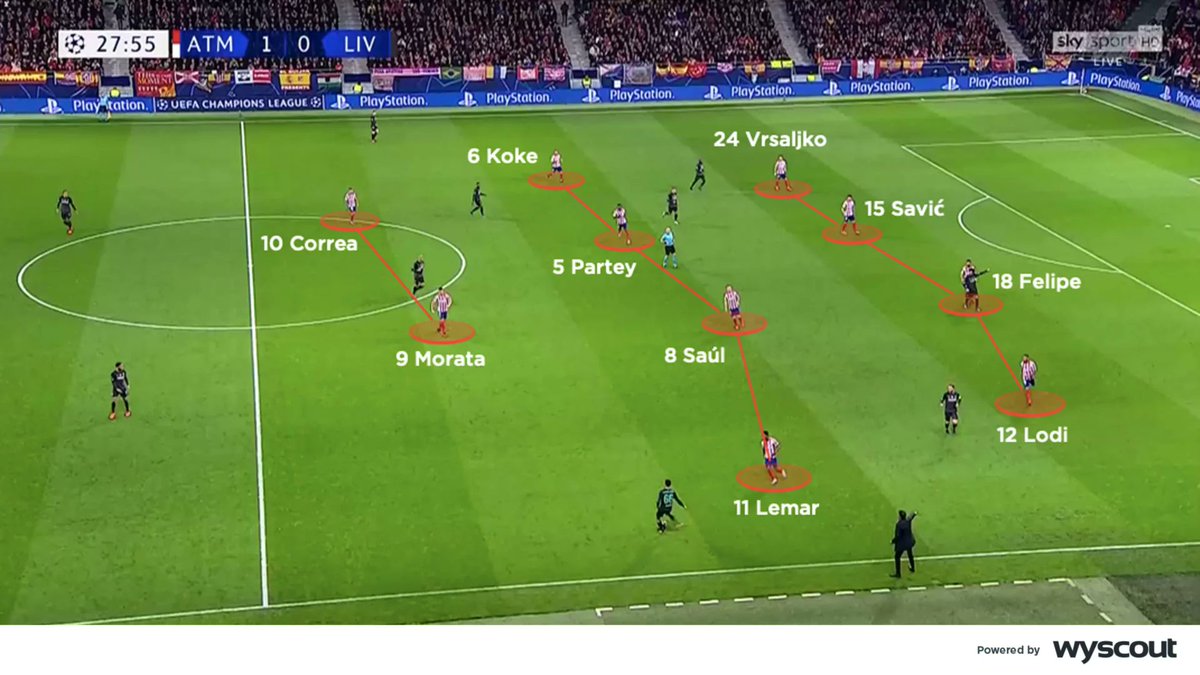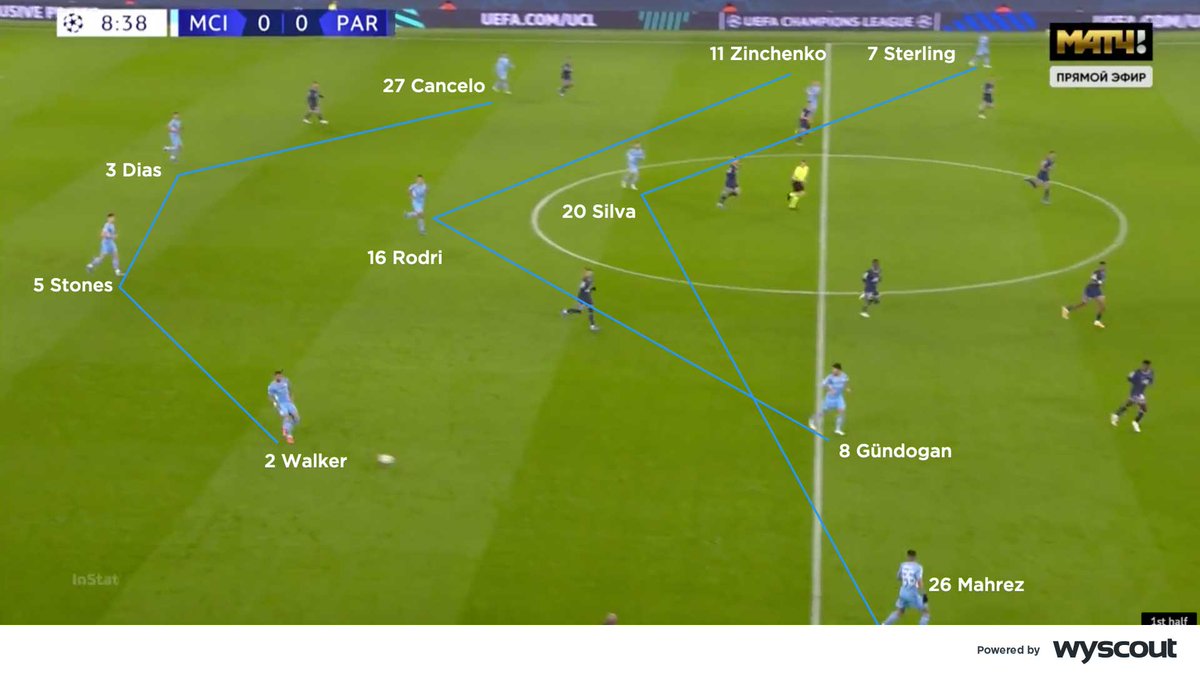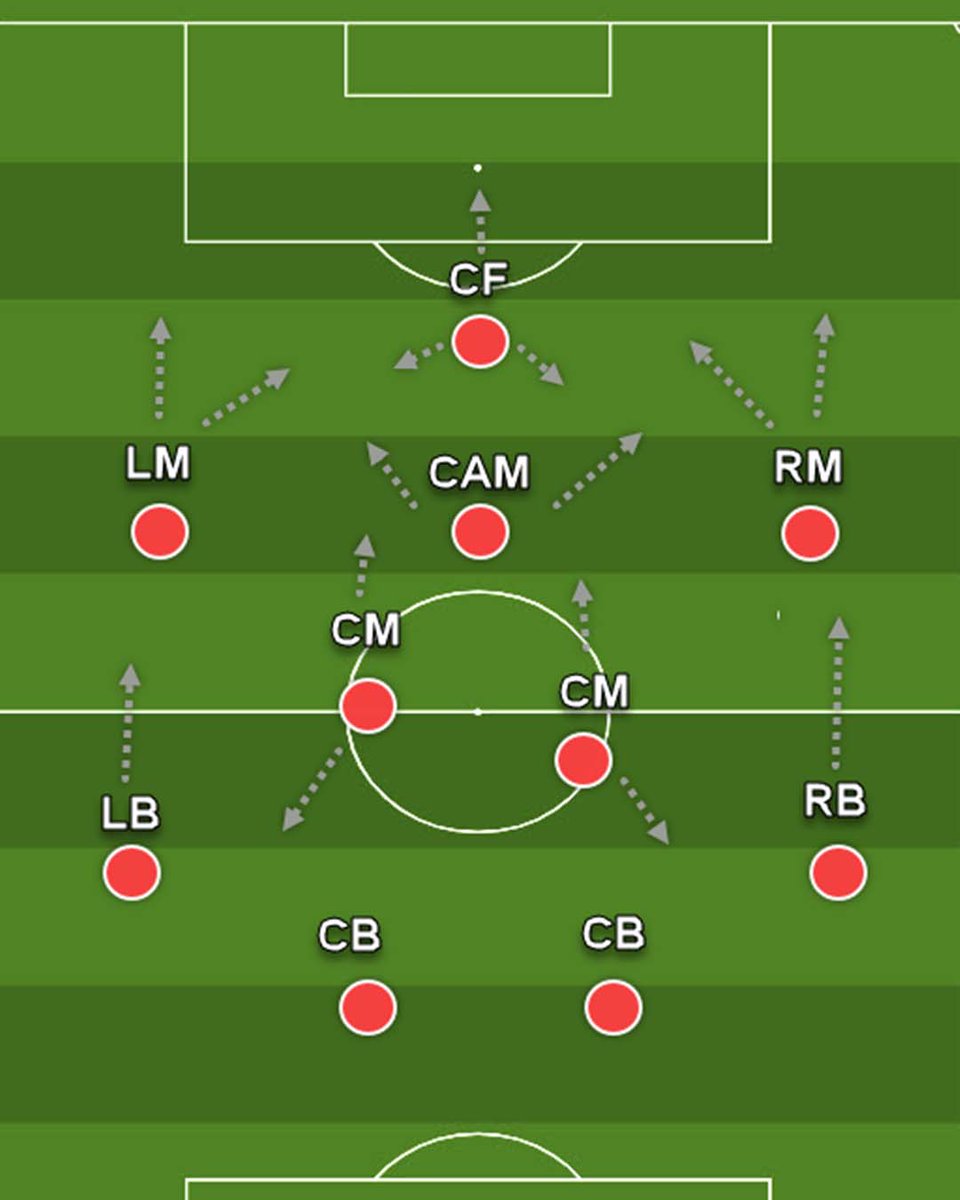
Thread 🧵
The 4-4-2 explained... 4️⃣4️⃣2️⃣
The 4-4-2 explained... 4️⃣4️⃣2️⃣
4-4-2 is made up of three distinct lines. The back four including two centre-backs and two full-backs. Ahead of them, a midfield four features two players in the middle and one on each side. Then the front two in attack who provide both height and goalscoring threat... 4️⃣4️⃣2️⃣🧵 

In the 1950s, Viktor Maslov developed another variation of the 4-2-4, in which the two wingers dropped back alongside the two central midfielders. So originated the 4-4-2, which worked to overload opposition midfields with traditionally fewer numbers... 4️⃣4️⃣2️⃣🧵 

In a 4-4-2, the two wide players in the midfield unit attack around the opposition back line to provide crosses for the two centre-forwards, or cut inside and combine with shorter passes. They can also run inside and beyond as one of the two front players rotates out... 4️⃣4️⃣2️⃣🧵 

The centre-forwards screen in front of the opposition pivots, and press the back line. As the wide midfielders drop alongside the two central midfielders to form a flat four, this unit aims to maintain a compact distance between the front line and the back four... 4️⃣4️⃣2️⃣🧵 

Sir Alex Ferguson favoured a 4-4-2 with wide midfielders who could attack around a defensive line and cross, but also drift into the inside channels to combine with box-to-box midfielders supporting the attack... 4️⃣4️⃣2️⃣🧵 

Diego Simeone has favoured a 4-4-2 throughout his tenure at Atlético Madrid. Defensively, he prefers a mid or low block, focusing on compactness between his units (below) and controlling matches through covering key spaces in Atlético’s own half... 4️⃣4️⃣2️⃣🧵 

Sean Dyche has utilised a 4-4-2 to defend in mid and low blocks throughout his time in the Premier League, with versatile defenders able to cover a variety of spaces in their half – an approach he shares with Simeone... 4️⃣4️⃣2️⃣🧵 

• • •
Missing some Tweet in this thread? You can try to
force a refresh


















